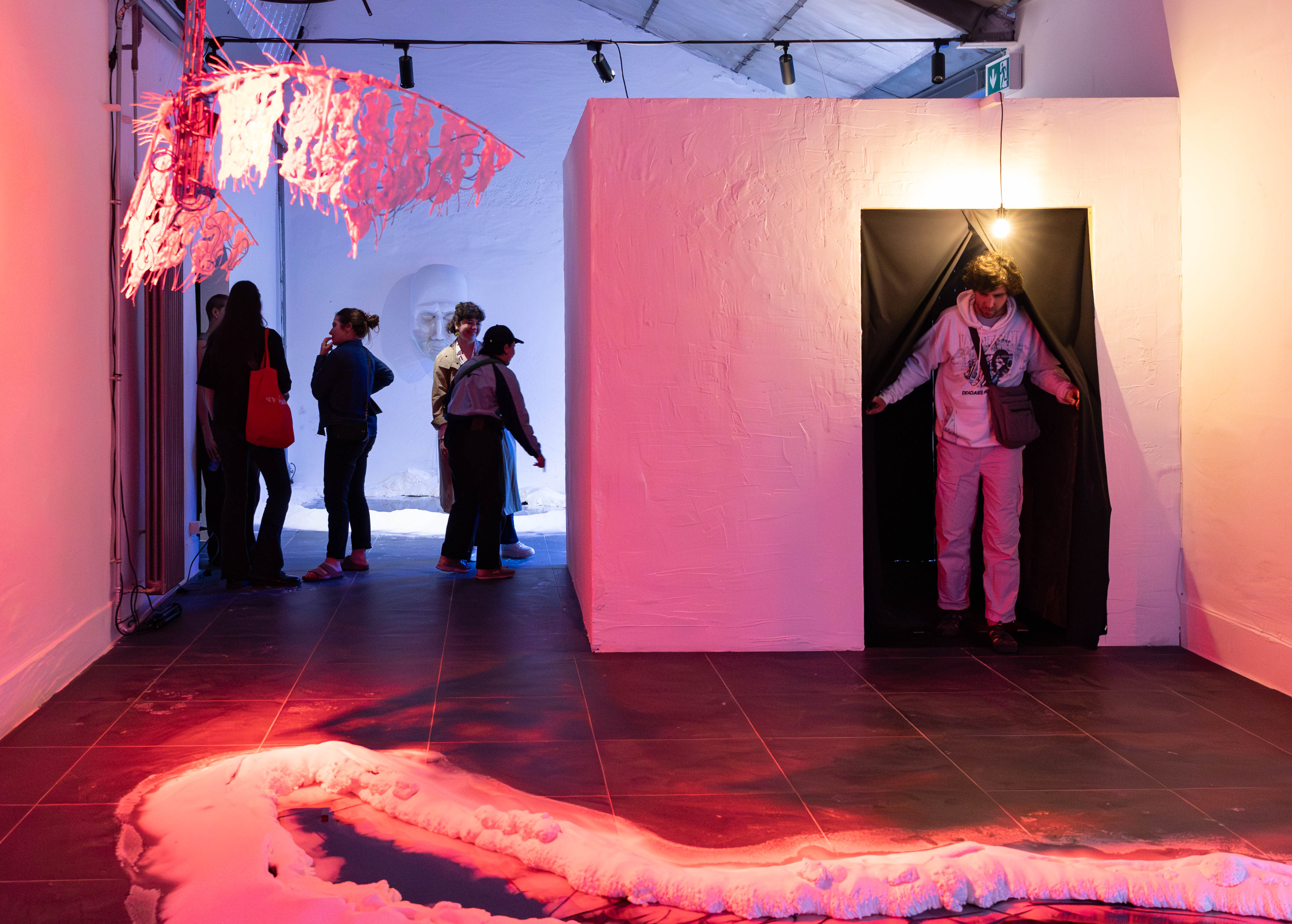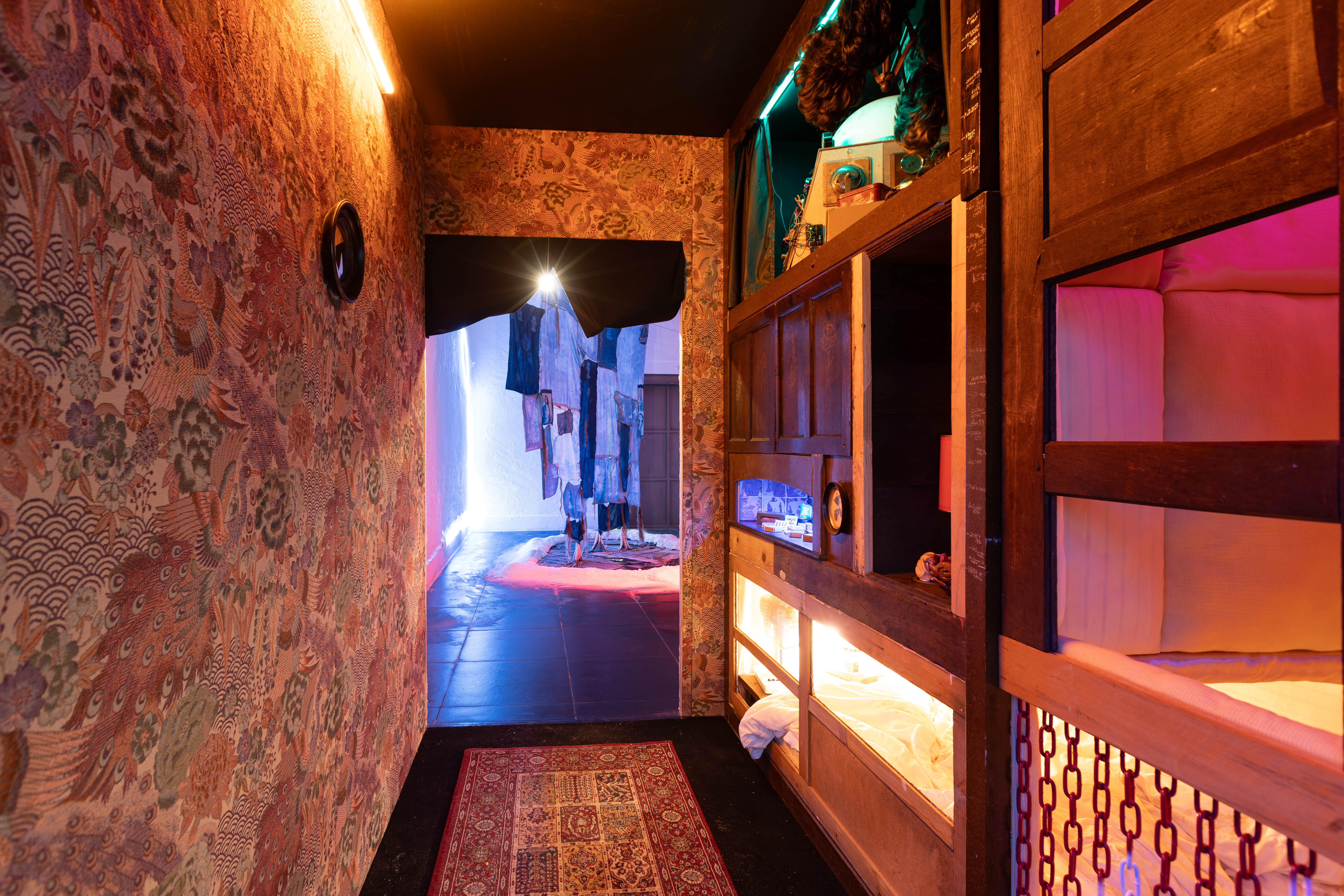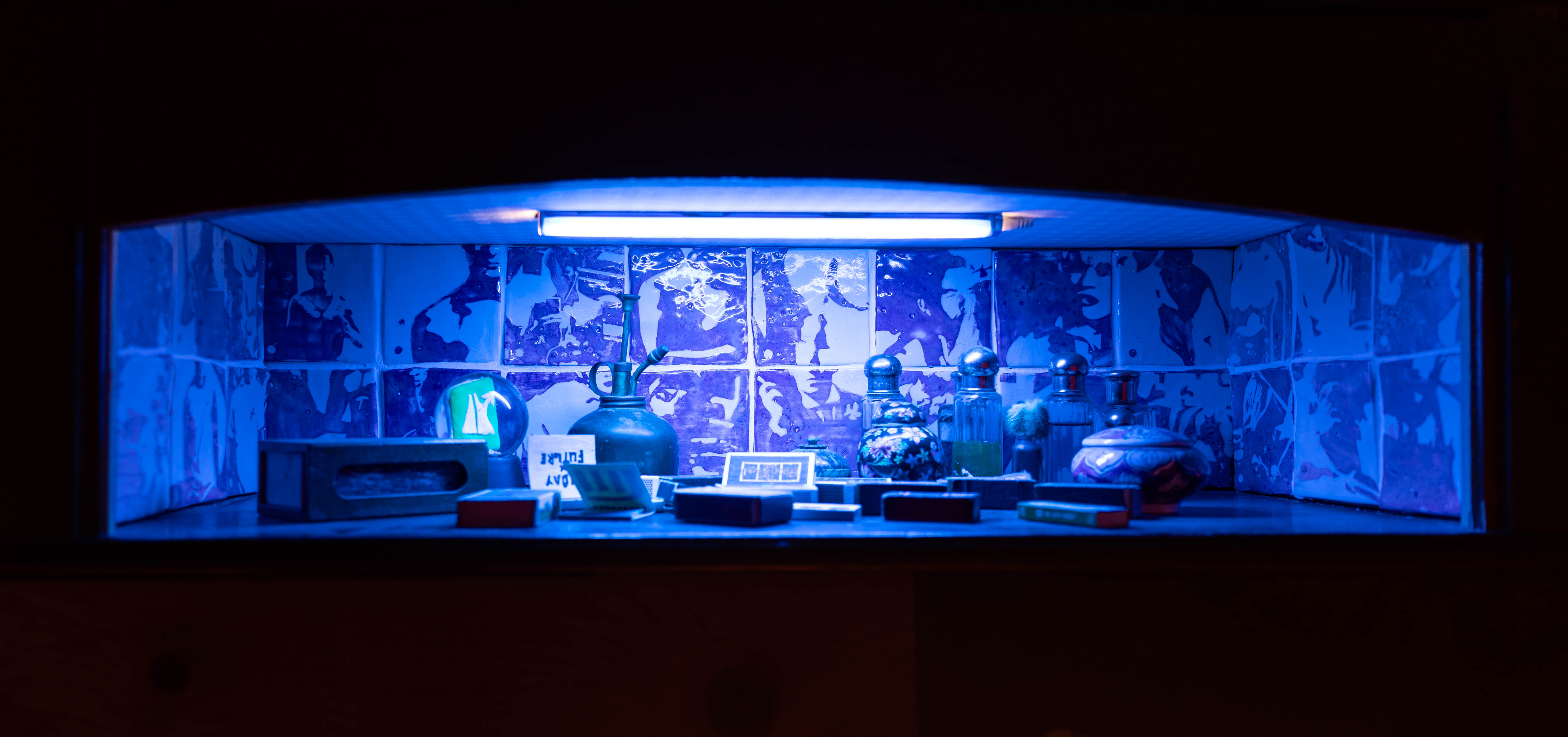Vincent Grange - About
Dorothy’s Interior Boulevard (2025)
Dorothy’s Closet - v3 (2024)
Dorothy’s Picnic Set (2024)
Dorothy’s Closet - v2 (2024)
Dorothy’s Closet - v1 (2024)
La voisine qui en savait trop (2024)
The House of Dorothy - v2 (2024)
Entre 70 et 75 degrés (2024)
The House of Dorothy - v1 (2023)
Bonnie (2023)
First Encounter (2022)
Maison Sauvage (2022)
KETA1000 (2021)
L’Allégorie de la Caverne (2021)
Dorothy’s Closet (2024) - Læ Fol, l’Aube et l’Étoile @Espace Dukat
Dorothy’s Closet was awarded the ->Kiefer Hablitzel Göhner Prize at the Swiss Art Awards at ArtBasel in 2024, it then teleported back to ->Espace Dukat in Geneva for the ->Læ Fol, L’Aube et l’Étoile exhibition, curated by Collectif Kimera.

The LGBTQIA+ community has developed multiple secret codes over time to communicate one’s sexual orientation or gender identity discreetly in times of segregation. To name a few, Queer people have been able to identify each other through flowers, colored bandanas, ice cream flavors, cut fingernails, peacock feathers, or - by introducing themselves as “friends of Dorothy.” In 1981, when it was still illegal to be gay in the USA, The Naval Investigative Service (NIS) of Chicago heard about the “Dorothy” phenomenon within the US military and led an important investigation to catch her, hoping she would give out the names of all her gay military friends. In response to the absurdity of this homophobic investigation, I am currently developing and building the home of the imaginary best friend of the community – The House of Dorothy (2023). This project is a way for me to pay homage to queer spaces around the world and acts as a physical manifesto to stress the importance of their existence when 67 countries still criminalize the LGBTQIA+ community today.
Dorothy’s Closet (2024) is a new room in this ever-growing project. Starting from the expression “coming out of the closet,” it questions what a simple piece of furniture represents for those who must hide in it: a place of shelter, a place where you can be your true self, a place where you shape your personality, yet simultaneously a symbol of societal marginalization, fostering feelings of “abnormality.” Playing with the multiple paradoxes that accompany the “closet” (private/public, invisible/visible, inside/outside, comforting/disconcerting), the architecture, objects, and colors contribute to the storytelling of the life of Dorothy and how she and, by extension, members of the LGBTQIA+ community, shape their own closet.
In my artistic practice, absurdity is a tool I use to highlight the irrational nature of homo-, trans-, and bi-phobia. Reclaiming symbols of hate, such as the words «queer» or «fruits,» whic were once used derogatorily against LGBTQIA+ people, has been a powerful response by the oppressed, transforming insults into symbols of pride and resistance. The celebration of uniqueness and peculiarity within the LGBTQIA+ community has empowered many to accept, value, and reconstruct their identities. Through numerous references to queer theory, history, spaces and activists, and by reinterpreting everyday objects, I aim to glorify these aspects of the community that have been marginalized for so long.
![]()
![]()
![]()
![]()
![]()
![]()
![]()
![]()
![]()
![]()
![]()
![]()
![]()
![]()
![]()
![]()
![]()
![]()
Special thanks to:
Tanguy Troubat
Collectif Kimera
Video: © Courtesy BAK/OFC, Gina Folly, 2024
Photos 1-6 © France Bellmas
Photos 7-16 and map © Tanguy Troubat - Souplex Atelier







